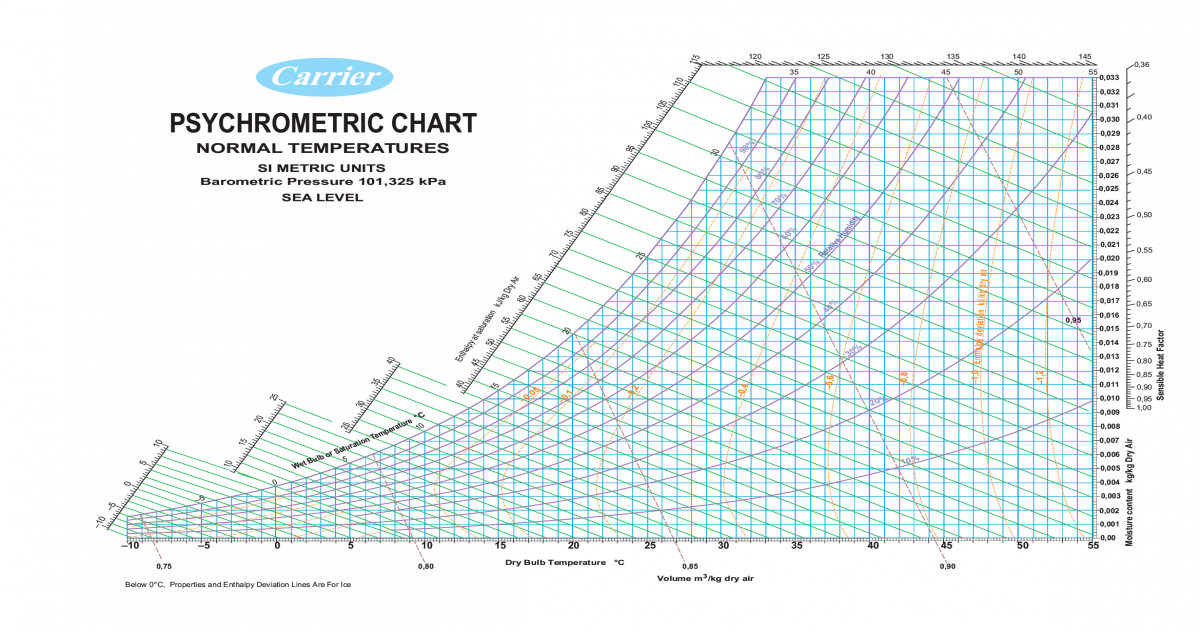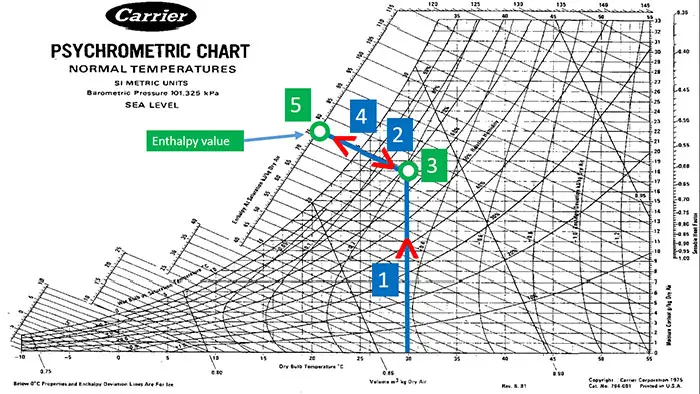


Humidity ratio is dimensionless, but is sometimes expressed as grams of water per kilogram of dry air or grains of water per pound of air. For a given DBT there will be a particular humidity ratio for which the air sample is at 100% relative humidity: the relationship reflects the physics of water and air and must be measured. It is typically the y-axis, the vertical axis, of the graph. Humidity ratio (also known as moisture content, mixing ratio, or specific humidity) is the proportion of mass of water vapor per unit mass of dry air at the given conditions (DBT, WBT, DPT, RH, etc.).Note: the notion that air "holds" moisture, or that moisture dissolves in dry air and saturates the solution at some proportion, is an erroneous (albeit widespread) concept (see relative humidity for further details). Lines of constant RH reflect the physics of air and water: they are determined via experimental measurement. RH is dimensionless, and is usually expressed as a percentage. Relative humidity ( RH) is the ratio of the mole fraction of water vapor to the mole fraction of saturated moist air at the same temperature and pressure.It duplicates information available via other humidity properties and the saturation curve. The dewpoint temperature is measured easily and provides useful information, but is normally not considered an independent property. At this saturation point, water vapor would begin to condense into liquid water fog or (if below freezing) solid hoarfrost, as heat is removed. Dew point temperature ( DPT) is that temperature at which a moist air sample at the same pressure would reach water vapor saturation.The slope of the line of constant WBT reflects the heat of vaporization of the water required to saturate the air of a given relative humidity. The WBT is the same as the DBT when the air sample is saturated with water. In practice, this is the reading of a thermometer whose sensing bulb is covered with a wet sock evaporating into a rapid stream of the sample air.

Wet-bulb temperature ( WBT) is that of an air sample after it has passed through a constant-pressure, ideal, adiabatic saturation process, that is, after the air has passed over a large surface of liquid water in an insulated channel.The SI units for temperature are Celsius other units are Fahrenheit. It is typically the x-axis, the horizontal axis, of the graph. Dry-bulb temperature ( DBT) is that of an air sample, as determined by an ordinary thermometer, the thermometer's bulb being dry.The thermophysical properties found on most psychrometric charts are: The chart graphically expresses how various properties relate to each other, and is thus a graphical equation of state. This property of air-water vapor systems simplifies drying and cooling calculations often performed using psychrometic relationships.Ī psychrometric chart is a graph of the physical properties of moist air at a constant pressure (often equated to an elevation relative to sea level). The psychrometric ratio of air-water vapor mixtures is approximately unity which implies that the difference between the adiabatic saturation temperature and wet bulb temperature of air-water vapor mixtures is small.

Mixtures of air and water vapor are the most common systems encountered in psychrometry. The psychrometric ratio is an important property in the area of psychrometrics as it relates the absolute humidity and saturation humidity to the difference between the dry bulb temperature and the adiabatic saturation temperature. Humid heat is the constant-pressure specific heat of moist air, per unit mass of dry air.


 0 kommentar(er)
0 kommentar(er)
